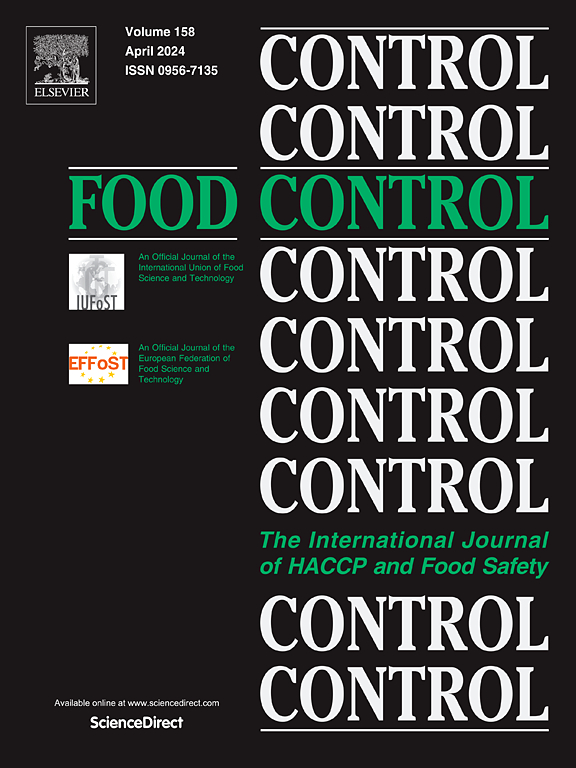Early detection of Blossom-End Rot in green peppers using fluorescence and normal color images in visible region
IF 5.6
1区 农林科学
Q1 FOOD SCIENCE & TECHNOLOGY
引用次数: 0
Abstract
Green peppers, a globally renowned vegetable known for their nutritional value, frequently encounter Blossom-End Rot (BER), a prevalent issue causing postharvest losses. Despite its significance, limited research has addressed the classification of BER-affected fruits from healthy ones. This study introduces a fluorescence imaging-based sensing approach designed to detect the presence of BER areas within captured fluorescence and color images of green peppers. Conducted across a two-year span in three Japanese greenhouses, this research focused on gathering BER-affected green pepper samples and characterizing their features. Utilizing a spectrofluorometer and fluorescence microscope, distinct characteristics of BER areas were estimated in comparison to healthy regions. A total of 774 image sets, each comprising images captured under various light sources, were analyzed. The findings revealed pronounced cell death and chlorophyll degradation within the BER areas, notably manifesting considerable changes in the G channel of images illuminated by white and 365 nm light sources. A classification model trained on these paired images achieved a 94.9% accuracy, including 86.2% for early-stage BER detection. Compared to the conventional ResNet50-based method, which struggled to detect subtle early-stage BER symptoms, the proposed method demonstrated superior performance. This dual-channel sensing approach offers a cost-effective and practical solution for accurately detecting BER at all stages, providing valuable applications for quality control in grading facilities and on farms.
求助全文
约1分钟内获得全文
求助全文
来源期刊

Food Control
工程技术-食品科技
CiteScore
12.20
自引率
6.70%
发文量
758
审稿时长
33 days
期刊介绍:
Food Control is an international journal that provides essential information for those involved in food safety and process control.
Food Control covers the below areas that relate to food process control or to food safety of human foods:
• Microbial food safety and antimicrobial systems
• Mycotoxins
• Hazard analysis, HACCP and food safety objectives
• Risk assessment, including microbial and chemical hazards
• Quality assurance
• Good manufacturing practices
• Food process systems design and control
• Food Packaging technology and materials in contact with foods
• Rapid methods of analysis and detection, including sensor technology
• Codes of practice, legislation and international harmonization
• Consumer issues
• Education, training and research needs.
The scope of Food Control is comprehensive and includes original research papers, authoritative reviews, short communications, comment articles that report on new developments in food control, and position papers.
 求助内容:
求助内容: 应助结果提醒方式:
应助结果提醒方式:


